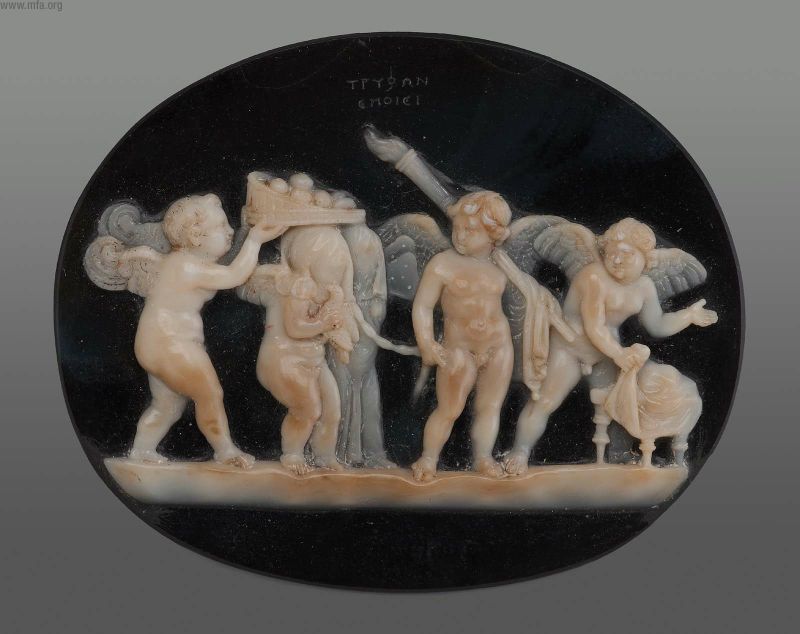In an article entitled “Greek Masterpieces and Roman Recreative Fictions,” Bettina Bergmann challenges characterizations of Roman art as transparently imitative and of a lesser quality than the Greek subjects, styles, and motifs the Romans often drew upon. According to Bergmann, Roman artists were neither direct copyists nor masters of deception, but were gifted in the art of reinscribing models with contemporary meanings, of composing creative paraphrases and simulations, and of making true something that was not. “Indeed,” she writes, “rather than mechanical and meaningless additions of the copyist, one might regard Roman variations as artful quotations or handy building blocks, like the associative Greek phrases quoted by Latin authors and given new meaning with each use.”
Bergmann’s apologetic resonates with scholars who are able to appreciate the profound complexity of images inscribed upon the most fragmentary artistic productions that survive from the Roman period. While each medium was defined by its own conventions, Roman visual culture was incredibly adept at accommodating not only diversity, but also affinities, within its rich multi-cultural landscape.
Over the past two years, I have been thinking and writing about one of the most famous, yet least understood pieces from the extant corpus of Roman gems—Tryphon’s rendition of The Wedding of Cupid and Psyche on a cameo now in the Museum of Fine Arts, Boston. Despite having belonged in several impression collections, the cameo’s enigmatic scene has never received more scholarly attention than a brief catalog description. Through a more intensive reading of its unique iconography (and as I have learned, new possibilities for reading the cameo arise on what feels like a daily basis...), I hope to offer new interpretive possibilities for this piece’s relationship to various Greek and Roman ritual models. In a broader sense, one of my persistent aims while working on this piece has been to generate new appreciation for the ability of artists and patrons from the Roman period to imbue even the most delicate ornament with such a rich plurality of meanings.
Beyond the variety of meanings we might glean from the actual scene inscribed on the cameo, our work in this course has raised new questions about, among others, the purpose of depicting ritual scenes in miniature, the contexts in which this object would have been viewed in antiquity (was it worn as jewelry, displayed as a curio, included in an actual ritual?), how its images would have been understood by different viewers (might it have been a sacred object for one person, a whimsical object for another?), and whether, following Bijker, for example, we can think about different social groups (in antiquity and in the cameo's history as a collectible object) who might have ascribed their own meanings to the cameo as having constituted distinct, simultaneous artifacts.
Since, in my own work, I am especially interested in the versatility of and similarities between various "religious" ritual frameworks in the high Roman Empire, it will be fruitful to consider whether ancient viewers would have been attentive to and/or comfortable with the kinds of multiple resonances the cameo evokes, or whether the utility of a distinct but simultaneous constitution would have been in its ability to affix a particular meaning or range of meanings to the cameo.

